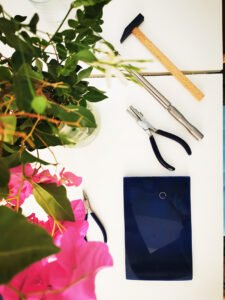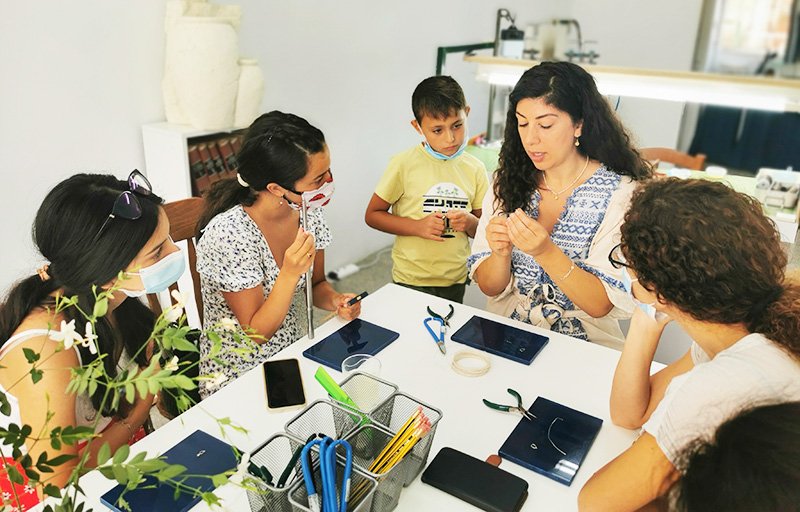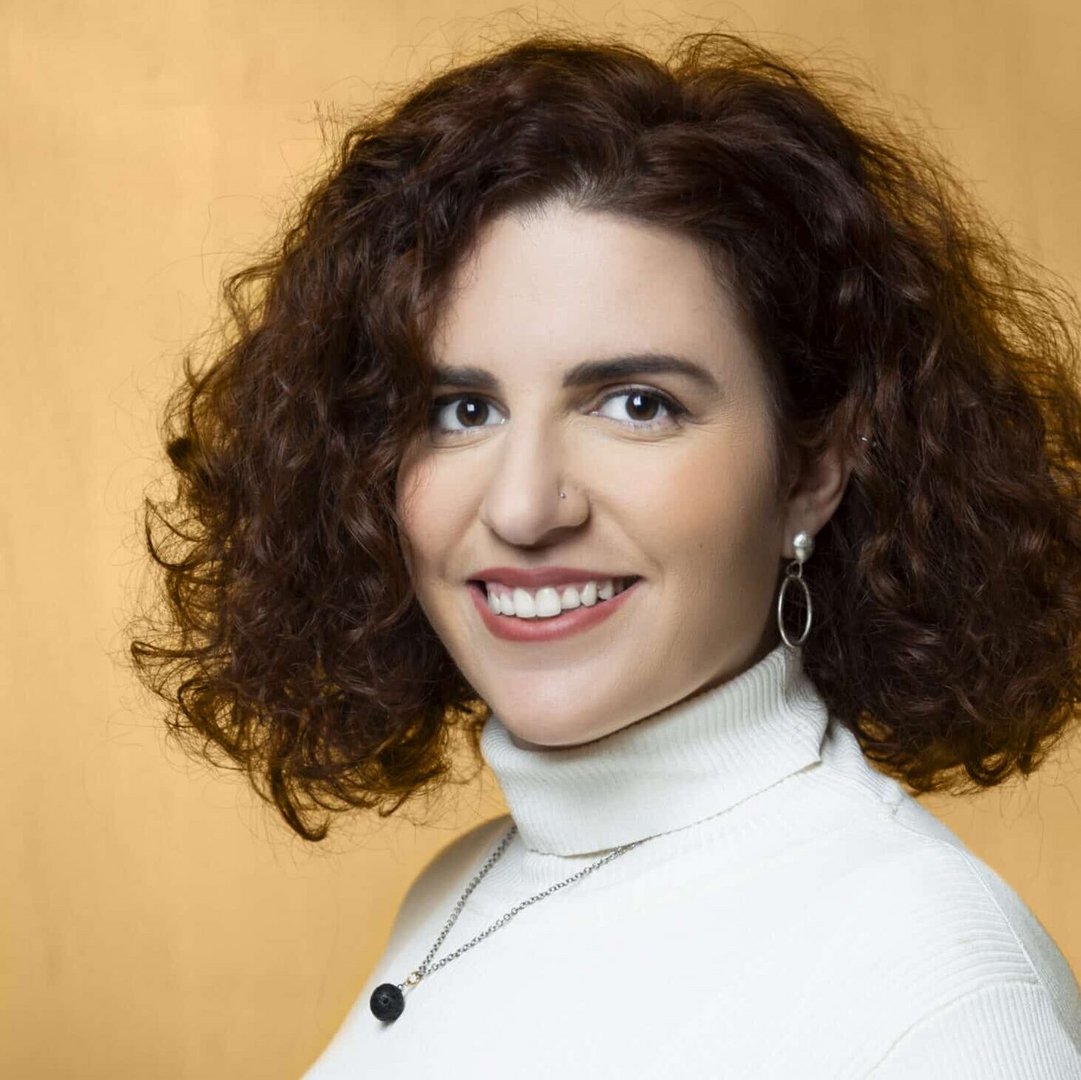Eleni Philippou learns the art of Cypriot filigree jewellery
Growing up in Cyprus to two Greek Cypriot parents meant that local traditions took place without much thought. It was just what we did. On Easter Sunday we eat lamb, on our name day we offer tasty treats to friends and family, on a relative’s wedding day we pass a red ribbon around the bride’s waist.
This was all second nature to me, embedded into my DNA but I never truly appreciated all the things that make home, home until my early adulthood after returning to Cyprus after years abroad. Even my grandmother’s lace handkerchief across the living room table. Soon enough, I began to pay attention to and adore local tradition and, as life has it, just as it was threatened to perish forever, it slowly made its way back into pop culture. Music festivals in rural villages, Cypriot woven designs on handbags and even jewellery made using traditional techniques.
In a new initiative to bring people closer to tradition and cultural tourism, the deputy ministry of tourism has launched a programme with 570 free traditional handicraft and enogastronomy workshops that are now taking place on the weekends until the end of the year. All kinds of crafts are being featured from learning to make palouze and basket weaving to hat making and traditional pottery creations. Every Saturday and Sunday, this July is a workshop teaching the Cypriot filigree jewellery technique. Something not to be missed.
On a Saturday morning, I drove to Dali to meet Eleni Nicolaou the founder of Sea of Lace, a brand that creates handcrafted jewellery with traditional techniques. I had shopped there numerous times so I was excited to see how these intricate, detailed pieces of jewellery were made.
We were six participants in total, including an eight-year-old boy who was certain that he wanted to get into the jewellery-making business professionally. You will have seen this type of jewellery in Lefkara village though, as Eleni explained, very few of those pieces are actually handmade in Cyprus. Nowadays, not many artists still have the knowhow. She is the youngest learning the trade – taught by her uncles who have been jewellery makers for decades.
Eleni took us through a brief history of the filigree technique, from its journey in Mesopotamia and Egypt to its arrival in Cyprus. “This particular style is the foundation of jewellery making,” said Eleni. “It is associated with loads of civilisations from Greece to Portugal, Russia and Asia and its practice dates back to 3000 BC.”

workshop tools
She then showed us the materials she uses, 925 sterling silver, melted and pulled through a machine to form a thin wire. These steps we skipped and simply observed Eleni demonstrating as there was still much to do in our two-hour workshop. After prepping the silver and thinning it down, we were each given a piece to shape that would form the outer part of our jewellery. That’s what the exciting part of the workshop was – that you would go home with a piece of jewellery you created!
You could make any shape you wanted. Some opted for a teardrop, others for a heart, I went for a circle for which I had to wrap my silver wire around a round tool and hammer it into shape. Hearing the click-clack of the hammer gave the sense that we were proper jewellers in a workshop. This step needed caution, gentle hands and no fear of getting your fingers or nails dirty. Once our shape was complete, Eleni glued the wire ends together to seal the piece, then came the tricky part.
To fill the skeleton of the jewellery, two ultra-thin wires twisted around each other had to be carefully twirled and placed into the centre of the shape we created. This twisted wire, the klostros as Eleni’s uncles call it, is what makes the filigree technique, it’s that fine detail that characterises the craft. And of course, this was the most difficult step.
We were given a special tool for twirling. We placed our wire on a piece of thick glass and twirled away, though it took multiple efforts and Eleni’s experienced hands to get it right. The tricky part is to get the wire in a circle, twisting it like a snail’s shell but without any bumps or lines laying on top of each other. If you squeezed too hard, it wouldn’t twirl but if your grip was too loose, it would lose its shape. I soon learnt manicured nails don’t ease the process, and Eleni jokes she rarely gets her nails done.

final results
Eventually, we managed it (with Eleni’s help). The final step before sealing it was to place our klostros inside the outer layer of the jewellery using tweezers. We then had to fix any lines or circles we wanted as the item would be glued and sealed exactly in the position we left it in. It took such effort to twirl the wire and get it in place that I was too afraid of touching it again. The final step was left up to Eleni and we all carefully observed her as she glued, fired up and threw dust over our creation to finish it off.
When handed my pendant, I couldn’t stop staring at it. It wasn’t perfect but I had made it from scratch and that was exciting! Now, my creation hangs around my neck and hopefully my artisan ancestors are as proud as Eleni was of us.
“I was unsure about how these workshops will turn out,” Eleni confided once the workshop was over, “but I am impressed by the interest the people showed, asking questions and really getting involved with this cultural heritage of filigree jewellery. My goal is for each visitor to leave my workshop feeling creative, informative and inspired.
“I would love for participants to appreciate the handmade process, the patience, time and skills a handmade jewellery piece holds. Especially with my traditional technique, I hope they feel closer to their ancestors and understand better the value of knowing more about our crafts and their story which is always relatable to our present.”
Eleven more workshops at Eleni’s studio are left in July. Two on each Saturday and Sunday until August 1 and spaces are filling up rather quickly. Besides this filigree workshop, there are about 570 more handicraft workshops offered through the ministry’s programme until the end of the year around the island. The full programme can be found via www.visitcyprus.com or https://bit.ly/3zTBpD9 and bookings are made through each workshop organiser for a hands-on experience of Cyprus‘ traditions.
Filigree Jewellery Workshop
Traditional jewellery class with jeweller Eleni Nicolaou. Double sessions every Saturday and Sunday until August 1. 10am-12pm and 4pm-6pm. Free. Bookings via email [email protected], social media or telephone 22-102591. Find all of the handicraft workshops in the ministry’s programme at https://bit.ly/3zTBpD9







Click here to change your cookie preferences